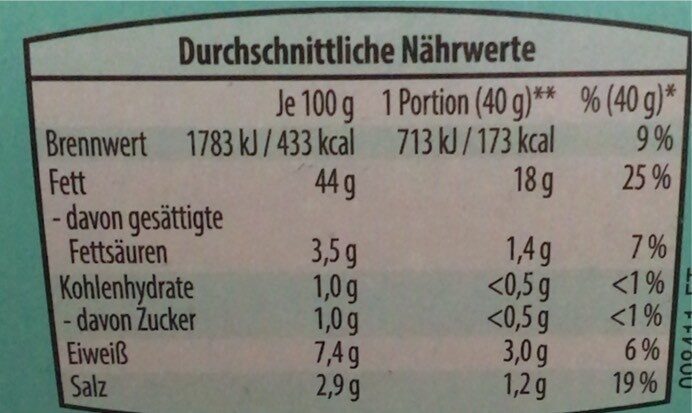Brotaufstrich Alaska-Seelachs - Wonnemeyer - 4 x 40 g
This product page is not complete. You can help to complete it by editing it and adding more data from the photos we have, or by taking more photos using the app for Android or iPhone/iPad. Thank you!
×
Barcode: 4061458213806 (EAN / EAN-13)
Quantity: 4 x 40 g
Packaging: Cardboard, de:Plastikbecher
Brands: Wonnemeyer
Categories: Seafood, Fishes and their products, Fishes, Spreads, Fish preparations
Labels, certifications, awards:
Sustainable, Sustainable fishery, Sustainable Seafood MSC
Manufacturing or processing places: D 24568 Kaltenkirchen
Traceability code: MSC-C-50209
Stores: Aldi Nord
Countries where sold: Germany
Matching with your preferences
Environment
Packaging
Transportation
Labels
Report a problem
Data sources
Product added on by kiliweb
Last edit of product page on by packbot.
Product page also edited by alexfauquette, bufonto, charlesnepote, ecoscore-impact-estimator, openfoodfacts-contributors, roboto-app, yuka.sY2b0xO6T85zoF3NwEKvlhNVUOaD-DjONzjfnWuM3vytALrmU9ht0qHBPas.












